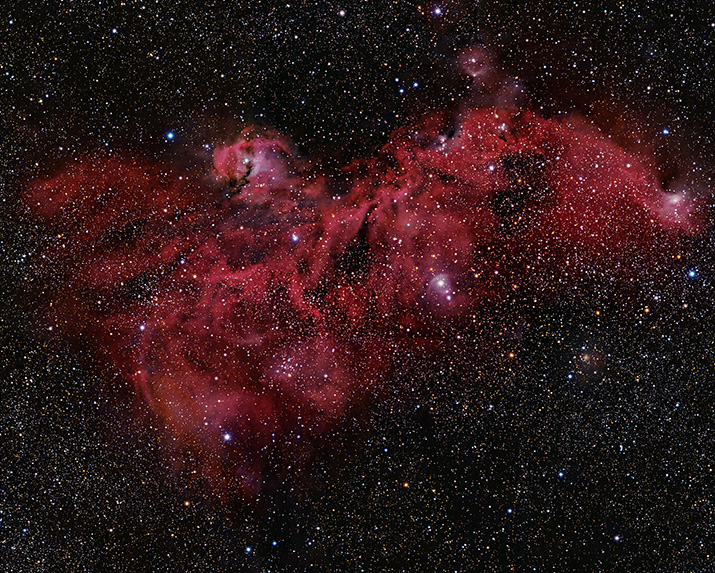
|
(6 Panel Mosaic)
Date: Feb. 2-3, 2025 Location: Dark Sky Observatory - Davis Mountains, TX |

|
IC 2177, commonly known as the Seagull Nebula, is a vast emission region located on the border between the constellations Monoceros and Canis Major, at a distance of about 3,700 light-years from Earth[3]. It is classified as an HII region, ionized by the hot Be-type star HD 53367, whose ultraviolet radiation excites the surrounding hydrogen gas[1]. This object forms part of a much larger, extended star-forming complex popularly named the Seagull Nebula[1]. The main components of the Seagull Nebula are two distinct emission regions: Sh2-296, which outlines the wide arc of the Seagull's wings[2], and Sh2-292 (IC 2177), commonly regarded as the "head"[2]. Several additional objects lie within the nebula including open clusters and reflection/emission nebulae. An annotated image showing the location and identification of embedded objects may be viewed here. The Seagull spans over 100 light-years in extent[3]. Its intricate arcs of glowing hydrogen, reflection nebulae, and dark dust lanes are powered primarily by HD 53367, a Be-type emission star of roughly 20 solar masses[3], accompanied by a companion star of about 5 solar masses[3]. Together, these stars supply the energy that illuminates and sculpts the dramatic forms of the Seagull Nebula.
Member of the Dark Sky Observatory Collaborative
References
|